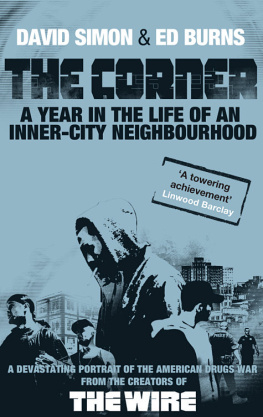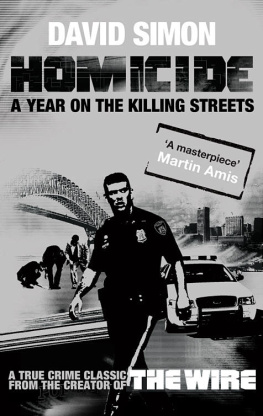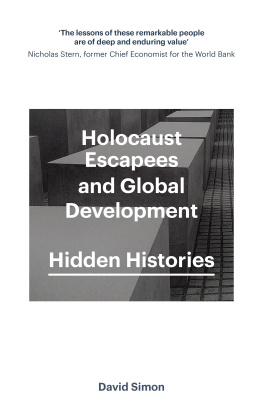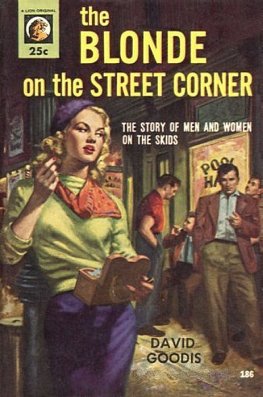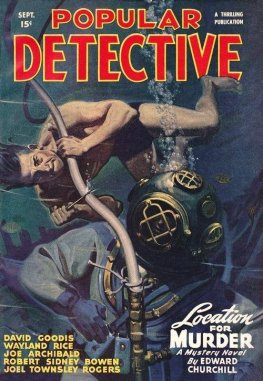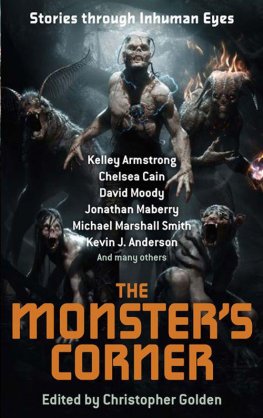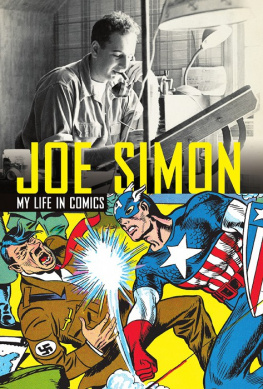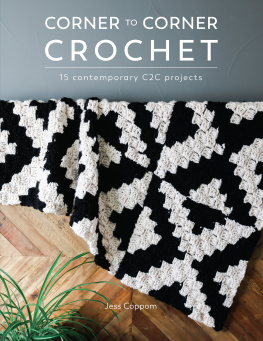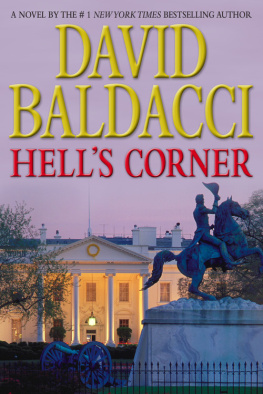David Simon - The Corner: A Year in the Life of an Inner-City Neighbourhood
Here you can read online David Simon - The Corner: A Year in the Life of an Inner-City Neighbourhood full text of the book (entire story) in english for free. Download pdf and epub, get meaning, cover and reviews about this ebook. genre: Detective and thriller. Description of the work, (preface) as well as reviews are available. Best literature library LitArk.com created for fans of good reading and offers a wide selection of genres:
Romance novel
Science fiction
Adventure
Detective
Science
History
Home and family
Prose
Art
Politics
Computer
Non-fiction
Religion
Business
Children
Humor
Choose a favorite category and find really read worthwhile books. Enjoy immersion in the world of imagination, feel the emotions of the characters or learn something new for yourself, make an fascinating discovery.
- Book:The Corner: A Year in the Life of an Inner-City Neighbourhood
- Author:
- Genre:
- Rating:5 / 5
- Favourites:Add to favourites
- Your mark:
- 100
- 1
- 2
- 3
- 4
- 5
The Corner: A Year in the Life of an Inner-City Neighbourhood: summary, description and annotation
We offer to read an annotation, description, summary or preface (depends on what the author of the book "The Corner: A Year in the Life of an Inner-City Neighbourhood" wrote himself). If you haven't found the necessary information about the book — write in the comments, we will try to find it.
David Simon: author's other books
Who wrote The Corner: A Year in the Life of an Inner-City Neighbourhood? Find out the surname, the name of the author of the book and a list of all author's works by series.
The Corner: A Year in the Life of an Inner-City Neighbourhood — read online for free the complete book (whole text) full work
Below is the text of the book, divided by pages. System saving the place of the last page read, allows you to conveniently read the book "The Corner: A Year in the Life of an Inner-City Neighbourhood" online for free, without having to search again every time where you left off. Put a bookmark, and you can go to the page where you finished reading at any time.
Font size:
Interval:
Bookmark:
Powerful and revealing it shows us the plight of urban America honestly and without condescending to those trapped on its mean streets. I defy you to read about them and not be moved.
WASHINGTON POST
A brave, unblinkered and heartbreaking look at the residents of a few blocks of West Baltimores ghetto So far above most reporting on the underclass as to demand attention.
NEW YORK TIMES BOOK REVIEW
The Corner is an intimate, intense dispatch from the broken heart of urban America. It is impossible to read these pages and not feel stunned at the high price, in human potential, in thwarted aspirations, that simple survival on the streets of West Baltimore demands of its citizens. An important document, as devastating as it is lucid.
RICHARD PRICE , author OF CLOCKERS
A triumph.
PHILADELPHIA INQUIRER
This harrowing work of journalism should come with a label: Do not read unless youre ready to be shaken to your soul Stick with it, and the reward is a deepened understanding of Americas complex, intractable drug culture, and, indeed, of human nature.
PEOPLE
A complex and beautifully written narrative A timely and important report from the front.
SAN FRANCISCO CHRONICLE
A bracing read.
ECONOMIST
A devastating account of the almost daily hardening of childrens hearts and hopes This is another world.
LOS ANGELES TIMES
Because the authors have been able to humanise their subjects without romanticising them or making heroes out of them, The Corner offers rare insight into not only one aspect of inner-city culture, but also into the utter failure of so much public policy at all levels.
NEWSDAY
For my parents,
Bernard & Dorothy Simon
For Anna Burns
You can hold back from the suffering of the world. You have free permission to do so and it is in accordance with your nature. But perhaps this very holding back is the one suffering you could have avoided.
Kafka
![]() = Open-air drug markets in 1993
= Open-air drug markets in 1993
Numbers in italic type refer to inset
- Martin Luther King Jr. Recreation Center
1a. MLK center playground - The Dew Drop Inn, 1625 Fayette Street (home to Fran, DeAndre, DeRodd in January 1993)
- 1717 Fayette Street (vacant house, once home to Gary, Fran, and DeAndre)
- 1806 Fayette Street (Ella Thompsons apartment)
- 1827 Vine Street (the McCullough home)
- 1825 Vine Street (Annies house)
- 1846 Fayette Street (Blues house)
- R.C.s apartment building
- St. James Methodist Church
- St. Martin's Roman Catholic Church
- Monroe and Fayette (Fat Curts corner)
- Bentalou Recreation Center
- 2526 Boyd Street (new home for Fran, DeAndre, and DeRodd as of late September 1993)
- Westside Shopping Center
- United Iron & Metal Company
- The scrap yard on McPhail Street
- Bon Secours Hospital
- Scoogies house
- Tyreekas house in January 1993 (the family's later move to Riggs Avenue puts them twenty blocks north by northwest, off the map)
- Francis M. Woods Senior High School
- Franklin Square Park
- Union Square Park
- Seapride Crabhouse (one of four In the Pratt and Monroe Street area, known as Crab Alley)
- Pops shooting gallery
- Browns funeral establishment
- Fairmount and Gilmore (DeAndres winter corner)
- McHenry and Gilmore (C.M.B.s summer corner)
- Mt. Clare Shopping Center

ONE
Fat Curt is on the corner.
He leans hard into his aluminum hospital cane, bent to this ancient business of survival. His fattened, needle-scarred hands will never again see the deep bottom of a trouser pocket; his forearms are swollen leather; his bloated legs mass up from the concrete. But then obese limbs converge on a withered torso: At the heart of the man, Fat Curt is fat no more.
Yo, Curt.
Turning slightly, Curt watches Junie glide over from the other side of Fayette, heading into Blues for the evenings last shot. Curt stops, a few feet from Blues door, and heres Mr. Blue himself, standing on the front steps of what was once his mothers pristine rowhome, scratching at the edges of his beard between arrivals, pocketing two bills from each, though its two more if you need a fresh tool. No charge, of course, for share and share alike.
From down the hill near Gilmor comes a short string of gunshotstoo even, too deliberate for firecrackers. Barely tensing, Blue allows Junie to edge past him on the marble steps. A regular: no charge for Junie.
They shootin already, says Blue.
Curt grunts. Motherfuckers cant tell no time.
Blue smiles softly, then turns to follow Junie inside.
Fat Curt slips slowly toward Monroe, reddened eyes tracking a white boy who pulls to the curb in a battered pickup. But theres no play here; one of Gee Moneys younger touts has already laid hands on the sale.
Curt works his way around the corner to Vine, passing Bryan, who nods acknowledgment. No sale here, either; not with Bryan Sampson out here working his own tired hustle, selling that baking soda. Curt shakes his head: Bryan looking to get his ass shot up again behind that Arm & Hammer shit.
From down the hill, from somewhere around Hollins and Payson this time, comes more crackling syncopationthe beginning of the deluge to come, though it isnt quite eleven yet. Curt shrugs it off and shuffles back toward Fayette. Time enough left, he knows, to make a little money.
Wassup?
Finally, a face he knows from down on Mount Street, a gaunt dark-skinned fiend, scurrying up the hill in the hope of catching a better product. Coming right at Curt.
Wassup now?
Curt growls assent. Shops open.
Somethin good?
Fat Curt, the oracle. Twenty-five years in service on these streets, and everyone knows theres no better tout at the corner where Fayette meets Monroe. Curtis Davis is the gravel-voiced purveyor of credible information, a steadfast believer in quality control and consumer advocacy. No bullshit, no burn bags, no watered-down B-and-Q garbage. Fat Curt, a tout among touts.
Might try round the way, he says, turning and gesturing with his cane toward the entrance to Vine Street.
The fiend takes his hunger down the block as Curt gives a confirming nod to the lookout at the mouth of the alley. Slowly, the aging tout canes his way back to the corner, shuffling beneath the jaundiced glare of sodium vapor. The city has put stage lighting out here; its harsh and direct, openly contemptuous of the scene itself. Fat Curt is forever exposed in the ugly glow, but he can remember when dull blue light washed more gently over these deeds, a time when the neighborhood was permitted some small privacy. Now, at an hour to midnight, the corner is visible at a full blocks distance. Dope and coke. Coke and dope. Twenty-four, seven: twenty-four hours a day, seven days a week.
More gunshots. Fulton and Lex by the sound of it. But Curt is still on post, waiting for the next sale, when the Western uniforms roll up for a last pass at the corner. The radio cars move slowly down Monroe, but its not a jump-out this time, just the ceremonial eyefuck and a sullen showing of the colors.
From down near Hollins and Payson again comes a long, staccato string. Ten or twelve in a row and nine millimeter by the report. But the police ignore it, their faces instead scanning the foot traffic, their brake lights showing red.
The lookouts raise up and go. The touts, customers, and runners stream away, evaporating like mist, moving down Fayette and into the back alleys. Fat Curt, too, turns from the police cruisers, stepping cane-to-foot-to-cane so slowly that any movement is more implied than realjust enough effort to suggest a polite, territorial retreat. From experience, Curt knows that it will be a short visit, that no right-minded police will be out on these streets fifteen minutes from now.
Font size:
Interval:
Bookmark:
Similar books «The Corner: A Year in the Life of an Inner-City Neighbourhood»
Look at similar books to The Corner: A Year in the Life of an Inner-City Neighbourhood. We have selected literature similar in name and meaning in the hope of providing readers with more options to find new, interesting, not yet read works.
Discussion, reviews of the book The Corner: A Year in the Life of an Inner-City Neighbourhood and just readers' own opinions. Leave your comments, write what you think about the work, its meaning or the main characters. Specify what exactly you liked and what you didn't like, and why you think so.

